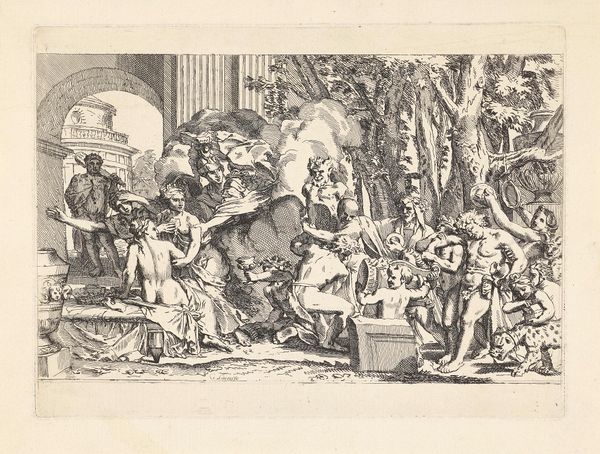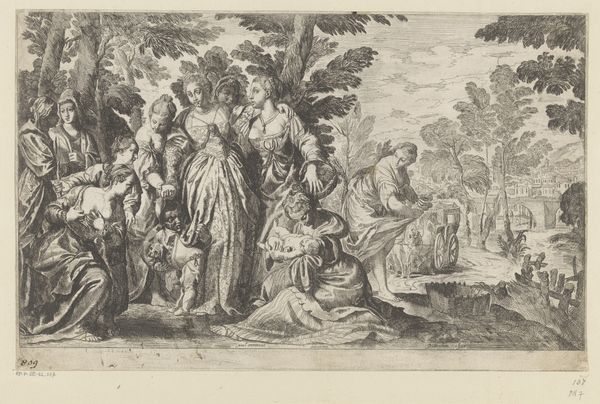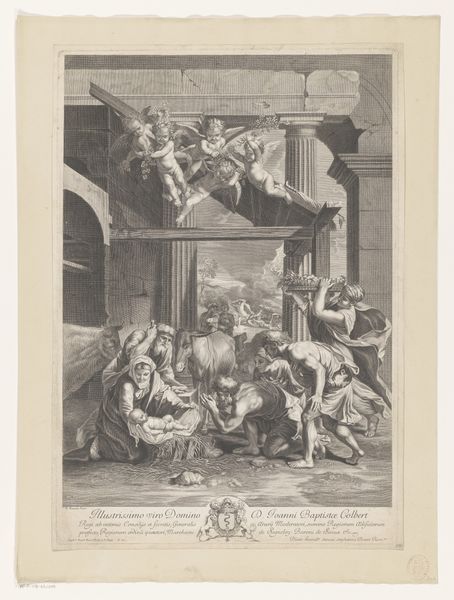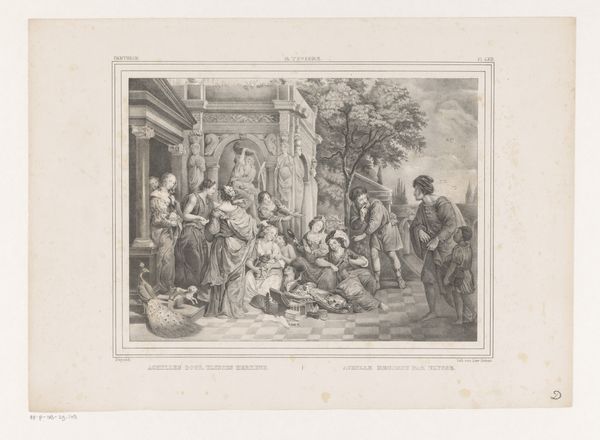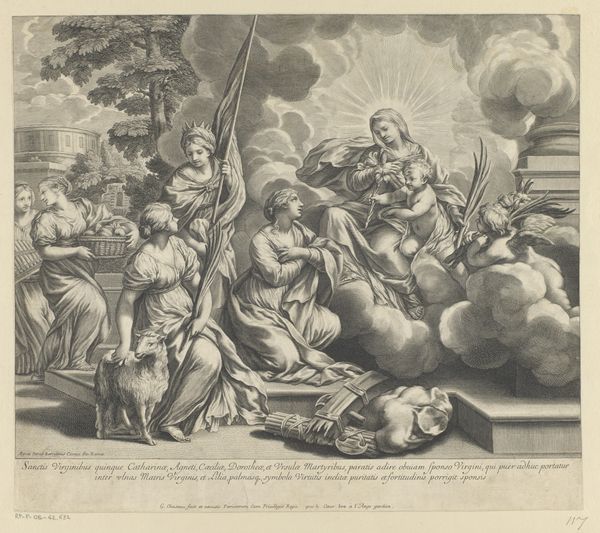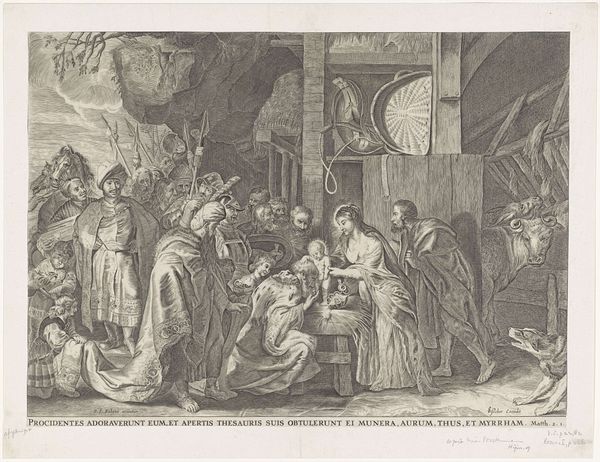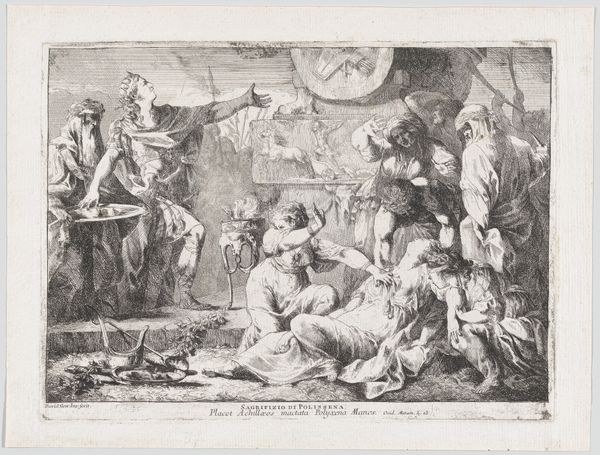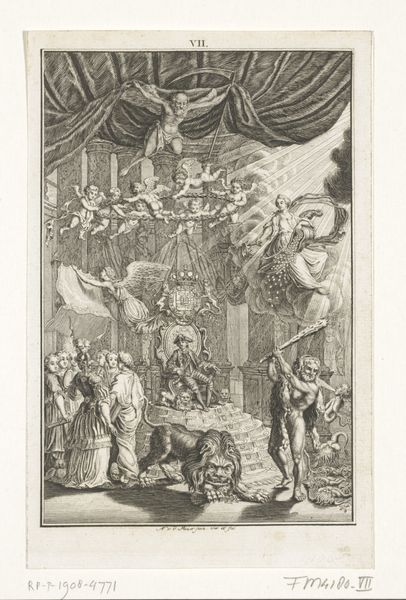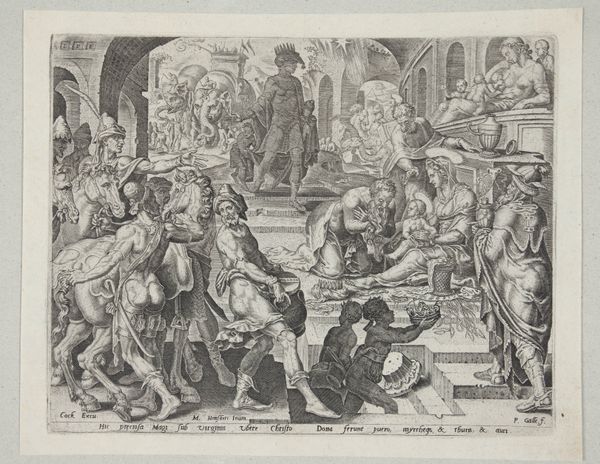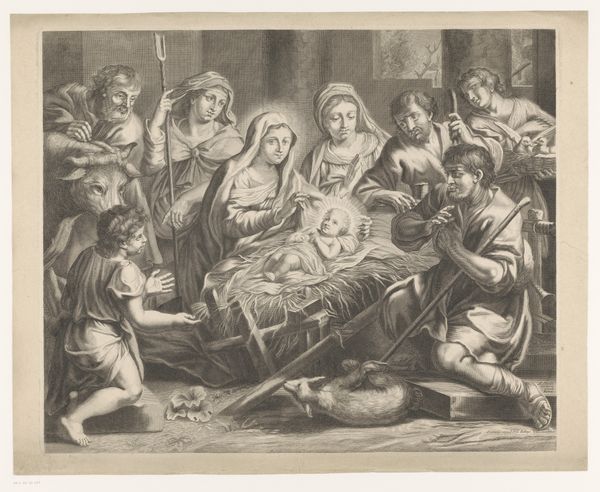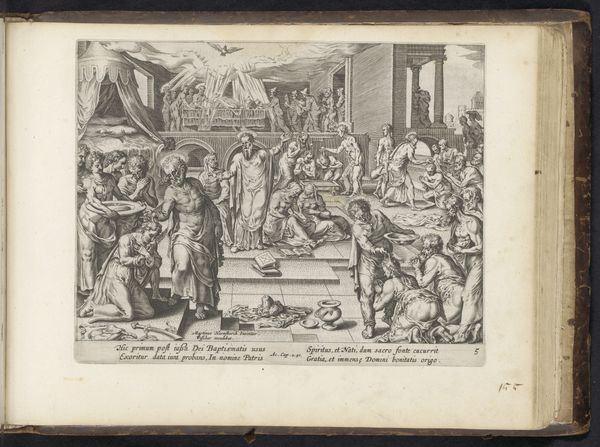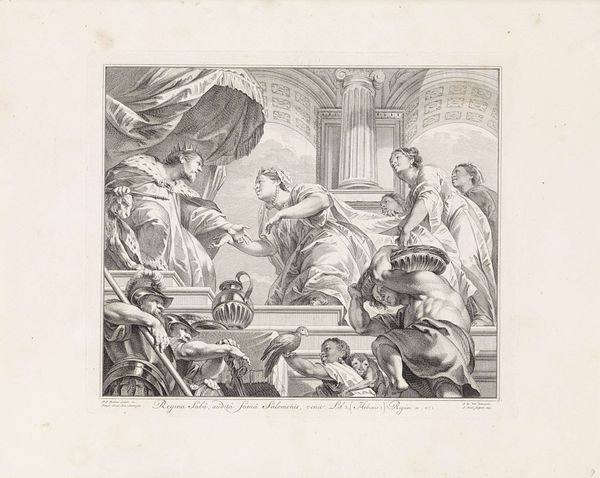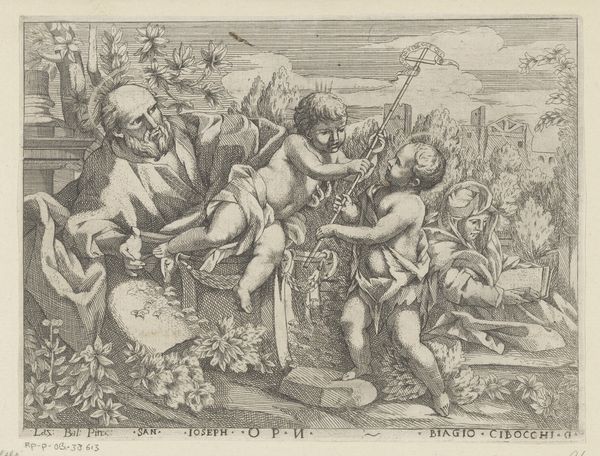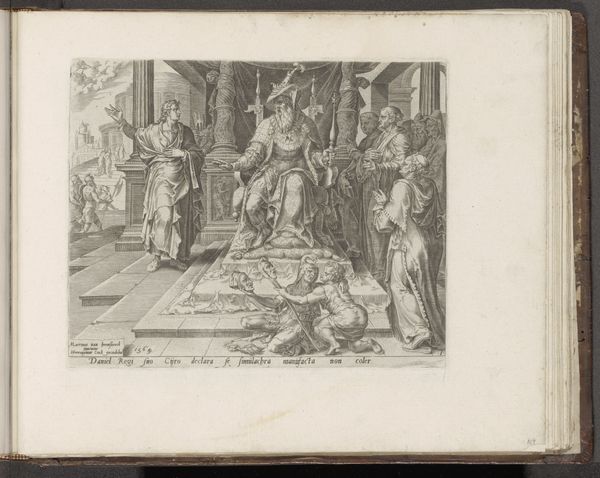
print, etching, engraving
#
narrative-art
#
baroque
# print
#
etching
#
old engraving style
#
figuration
#
history-painting
#
engraving
Dimensions: height 330 mm, width 460 mm
Copyright: Rijks Museum: Open Domain
Giovanni Cesare Testa made this print, “Dido op de brandstapel,” sometime in the mid-17th century. To create the image, he used a metal plate, likely copper, incising lines into its surface. These fine lines would have been filled with ink, then transferred to paper in a press. The material of the print gives it its character: a sharp, linear quality, well suited to the dramatic scene depicted. Notice how the parallel lines create shading and volume. The artist used these to build up areas of dark shadow or render the texture of the stone architecture. While prints like this one were considered fine art, they also had a practical function. They were relatively cheap to produce and served to disseminate images widely. In this case, the story of Dido, a queen from classical mythology, would have reached a broad audience. Considering its material and making helps us understand the social function of the print and the way it democratized access to classical stories.
Comments
No comments
Be the first to comment and join the conversation on the ultimate creative platform.
